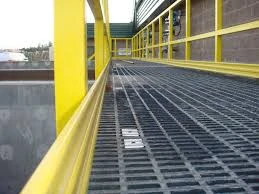
-
 Afrikaans
Afrikaans -
 Albanian
Albanian -
 Amharic
Amharic -
 Arabic
Arabic -
 Armenian
Armenian -
 Azerbaijani
Azerbaijani -
 Basque
Basque -
 Belarusian
Belarusian -
 Bengali
Bengali -
 Bosnian
Bosnian -
 Bulgarian
Bulgarian -
 Catalan
Catalan -
 Cebuano
Cebuano -
 China
China -
 China (Taiwan)
China (Taiwan) -
 Corsican
Corsican -
 Croatian
Croatian -
 Czech
Czech -
 Danish
Danish -
 Dutch
Dutch -
 English
English -
 Esperanto
Esperanto -
 Estonian
Estonian -
 Finnish
Finnish -
 French
French -
 Frisian
Frisian -
 Galician
Galician -
 Georgian
Georgian -
 German
German -
 Greek
Greek -
 Gujarati
Gujarati -
 Haitian Creole
Haitian Creole -
 hausa
hausa -
 hawaiian
hawaiian -
 Hebrew
Hebrew -
 Hindi
Hindi -
 Miao
Miao -
 Hungarian
Hungarian -
 Icelandic
Icelandic -
 igbo
igbo -
 Indonesian
Indonesian -
 irish
irish -
 Italian
Italian -
 Japanese
Japanese -
 Javanese
Javanese -
 Kannada
Kannada -
 kazakh
kazakh -
 Khmer
Khmer -
 Rwandese
Rwandese -
 Korean
Korean -
 Kurdish
Kurdish -
 Kyrgyz
Kyrgyz -
 Lao
Lao -
 Latin
Latin -
 Latvian
Latvian -
 Lithuanian
Lithuanian -
 Luxembourgish
Luxembourgish -
 Macedonian
Macedonian -
 Malgashi
Malgashi -
 Malay
Malay -
 Malayalam
Malayalam -
 Maltese
Maltese -
 Maori
Maori -
 Marathi
Marathi -
 Mongolian
Mongolian -
 Myanmar
Myanmar -
 Nepali
Nepali -
 Norwegian
Norwegian -
 Norwegian
Norwegian -
 Occitan
Occitan -
 Pashto
Pashto -
 Persian
Persian -
 Polish
Polish -
 Portuguese
Portuguese -
 Punjabi
Punjabi -
 Romanian
Romanian -
 Russian
Russian -
 Samoan
Samoan -
 Scottish Gaelic
Scottish Gaelic -
 Serbian
Serbian -
 Sesotho
Sesotho -
 Shona
Shona -
 Sindhi
Sindhi -
 Sinhala
Sinhala -
 Slovak
Slovak -
 Slovenian
Slovenian -
 Somali
Somali -
 Spanish
Spanish -
 Sundanese
Sundanese -
 Swahili
Swahili -
 Swedish
Swedish -
 Tagalog
Tagalog -
 Tajik
Tajik -
 Tamil
Tamil -
 Tatar
Tatar -
 Telugu
Telugu -
 Thai
Thai -
 Turkish
Turkish -
 Turkmen
Turkmen -
 Ukrainian
Ukrainian -
 Urdu
Urdu -
 Uighur
Uighur -
 Uzbek
Uzbek -
 Vietnamese
Vietnamese -
 Welsh
Welsh -
 Bantu
Bantu -
 Yiddish
Yiddish -
 Yoruba
Yoruba -
 Zulu
Zulu
Advantages and Applications of Fiberglass Grating in Modern Construction
The Benefits of Fiberglass Grating in Modern Construction
Fiberglass grating has emerged as a popular material in various industries, particularly in construction, due to its numerous advantages over traditional materials. Composed of interlocking fiberglass strands, this grating is lightweight, durable, and resistant to corrosion, making it an ideal choice for a variety of applications.
One of the primary benefits of fiberglass grating is its exceptional strength-to-weight ratio. Unlike metal or wood, which can be heavy and cumbersome, fiberglass grating is significantly lighter while still providing substantial load-bearing capabilities. This characteristic not only makes it easier to handle and install but also reduces the overall structural load, which can lead to cost savings in construction projects.
Another notable advantage of fiberglass grating is its resistance to corrosion and chemical damage. In environments where exposure to harsh chemicals, saltwater, or corrosive elements is inevitable, fiberglass grating outperforms traditional materials. For instance, industrial facilities, wastewater treatment plants, and coastal applications benefit greatly from this property, as it minimizes the need for maintenance and replacement, thereby extending the lifecycle of the installation.
Fiberglass grating also offers excellent slip resistance, making it a safe option for both pedestrian and vehicular traffic. This feature is particularly important in industrial settings where spills and splashes are common. Many manufacturers enhance the slip-resistant surface of their grating, thereby providing additional safety for workers. As safety regulations become increasingly stringent, incorporating fiberglass grating into designs can help companies meet compliance requirements more easily.
fiberglass grating

In addition to its practical benefits, fiberglass grating is also highly versatile in terms of design. It can be manufactured in various shapes, sizes, and colors, providing architects and designers with the flexibility to create aesthetically pleasing and functional spaces. This versatility makes fiberglass grating suitable for both industrial applications and commercial settings, such as shopping malls, restaurants, and recreational facilities.
Moreover, the installation process for fiberglass grating is comparatively straightforward. It can be cut and shaped using standard tools, allowing for customization on-site without the need for specialized equipment. This ease of installation can lead to quicker project timelines and reduced labor costs, making it an appealing option for contractors and project managers.
Sustainability is another relevant aspect to consider. Fiberglass grating is often made from recycled materials and is itself recyclable, making it a more environmentally friendly choice than conventional materials. In today’s construction landscape, where sustainability is a growing concern, using fiberglass grating can contribute to green building certifications and initiatives.
In conclusion, fiberglass grating is a transformative material that offers numerous benefits for modern construction projects. Its lightweight, durable, and corrosion-resistant features, combined with slip resistance and design versatility, make it an excellent choice for a variety of applications. As industries continue to evolve and focus more on safety, sustainability, and efficiency, fiberglass grating is poised to play a significant role in shaping the future of construction. Whether for industrial flooring, walkways, or decorative elements, fiberglass grating is a smart and effective solution for today's building challenges.
Latest news
-
Exploring the Benefits of Top Hammer Drifter Rods for Enhanced Drilling PerformanceNewsJun.10,2025
-
High-Precision Fiberglass Winding Machine for GRP/FRP Pipe Production – Reliable & Efficient SolutionsNewsJun.10,2025
-
FRP Pipes & Fittings for Shipbuilding - Corrosion-Resistant & LightweightNewsJun.09,2025
-
Premium FRP Flooring Solutions Durable & Slip-ResistantNewsJun.09,2025
-
Premium Fiberglass Rectangular Tanks Durable & Lightweight SolutionNewsJun.09,2025
-
Tapered Drill String Design Guide Durable Performance & UsesNewsJun.09,2025









